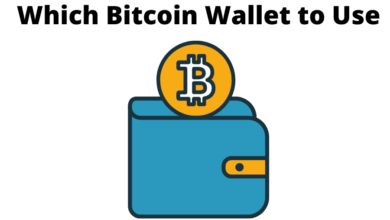What is Bitcoin, and How It Works?

There’s debate over how exactly to classify Bitcoin. Is it a kind of money, a financial asset, a payment system, or a class of assets? Fortunately, defining Bitcoin isn’t as difficult as it used to be. It’s an application of some software. There are procedures and processes involved with using Bitcoin. On top of all that, it’s the first and only successful attempt to create virtual money using cryptography, the science behind making and breaking codes.
There is a standard rule that “Bitcoin” be when referring to the cryptocurrencies as a whole. At the same time, it is presented as “bitcoin” when referring to individual units of the currency. The shortened form of Bitcoin is BTC. We’ll switch back and forth between these two styles throughout the piece. For more precise information, visit the website.
Also explore how to purchase crypto.
Blockchain
The bitcoin and Bitcoin were initially in a document written in 2008 by a person or group of individuals going by the name Satoshi Nakamoto; for a while, we used the two words interchangeably. As a result, many blockchain technologies have used the same cryptographic principles, each evolving into a distinct idea. Because of this, the terminology may be perplexing. The original Bitcoin network is referred to as blockchain in some contexts. Sometimes, it relates to testing new ideas as a whole or to a single ledger, such as that which drives Ethereum’s network.
Blockchain technology’s fundamentals are surprisingly simple to understand. A blockchain is nothing more than a chronologically ordered chain of discrete pieces of information. Emails, negotiations, land titles, certificates, and bond transactions are all examples of potentially included information. As long as both sides agree on the contract, a blockchain may theoretically support any agreement between two parties. It eliminates the necessity of involving a third party in any deal. To put it another way, this opens the door to a whole new range of financial services, such as peer-to-peer lending and other decentralized savings and checking accounts.
Post-Trust
Despite or instead because it is entirely open, Bitcoin is tough to hack. Given that bitcoin has no real-world presence, there is no way to store or dispose of it safely, whether in a safe or out in the woods. A thief would have to write a line to your ledger reading “you paid me all you had” to steal it. Doubling up on purchases is a concern that’s connected.
A bad actor might spend bitcoin, subsequently pay it again, which would swiftly cause people to lose faith in the currency’s worth. A malicious actor would have to control 51% of Bitcoin’s mining power to pull off a double-spend. Bitcoin network expansion makes this less feasible since the needed computer power would be enormous and prohibitively expensive.
Mining
Mining is the mechanism that keeps this public ledger free of any trust. A network of Bitcoin miners records all of the bitcoin trades that take place on the network, ensuring the integrity of the blockchain. Modern computers can easily keep track of a series of transactions, but mining Bitcoin is challenging because the software artificially prolongs the process. People could profit themselves or bankrupt others by faking transactions if there was no additional obstacle. If a fraudulent transaction is on the blockchain, a slew of unrelated transactions might be piled on top of it, making it nearly difficult to separate the two.
Halving
To recap, miners receive Bitcoin for validating transaction blocks. Because of this, Bitcoin miners will continue to get incentives until around 2140. Miners will be even after every Bitcoin is generated from code and completed all halvings by charging network users fees. Healthy competition, it is hoped, would keep costs as low as possible. His technique raises the stock-to-flow ratio of Bitcoin while simultaneously reducing its inflation to zero. A third halving took place last May 11, 2020, increasing the block reward from 6.25 bitcoins to 8.25 bitcoins.
Hashes
Here’s a more in-depth look at the mining process. The current batch of data — is sent to the community of miners, who are dispersed throughout the world and not connected in any way, personal/professional. For this, they pass the data through some cryptographic algorithm, which creates a “hash,” a stream of numbers and characters that verify the authenticity of the data while concealing it. Mines of industrial scale and large mine pools now create an oligopoly, contrary to the idealized notion of decentralized mining.
See more on Hashes vs salting.








